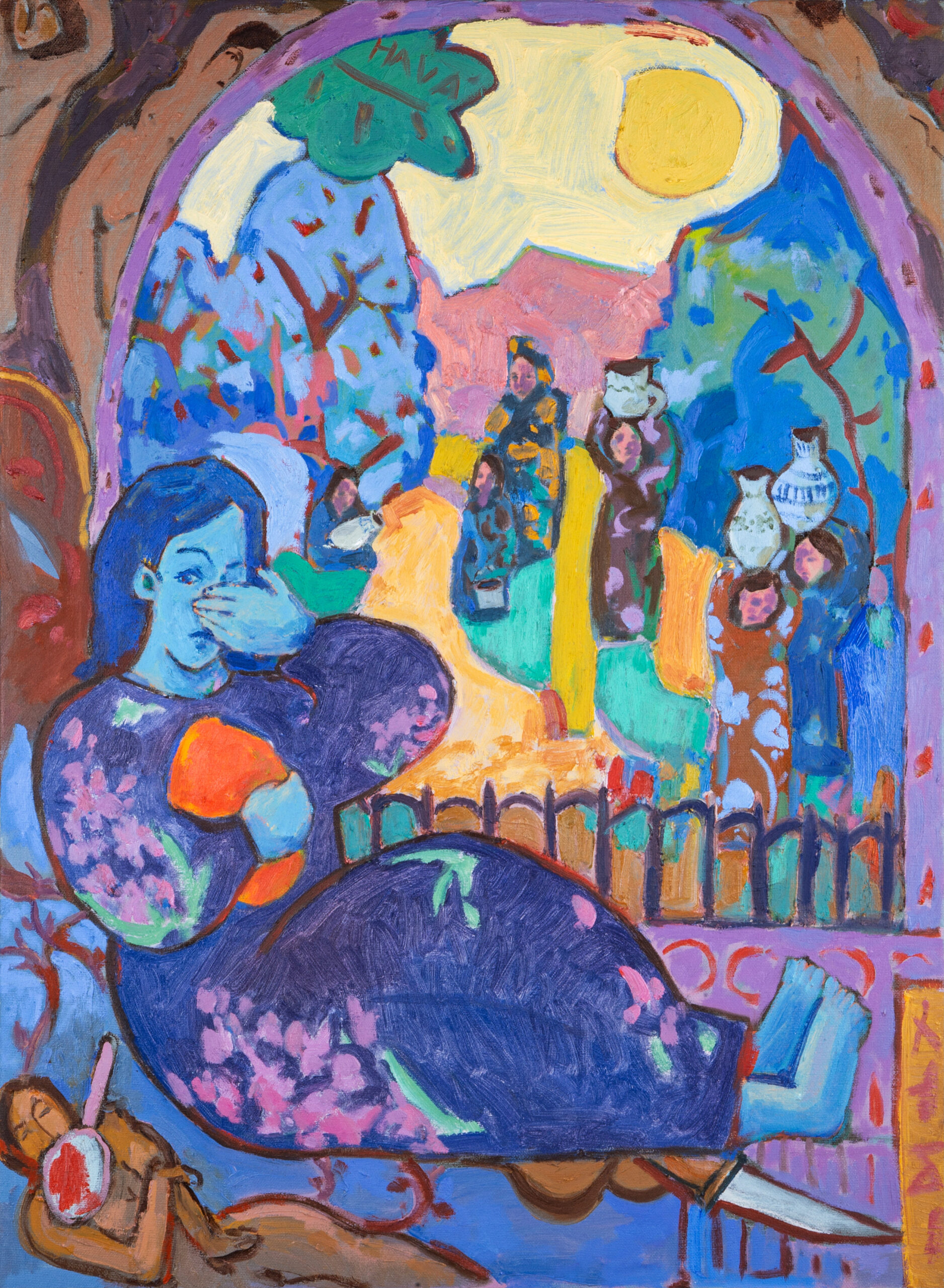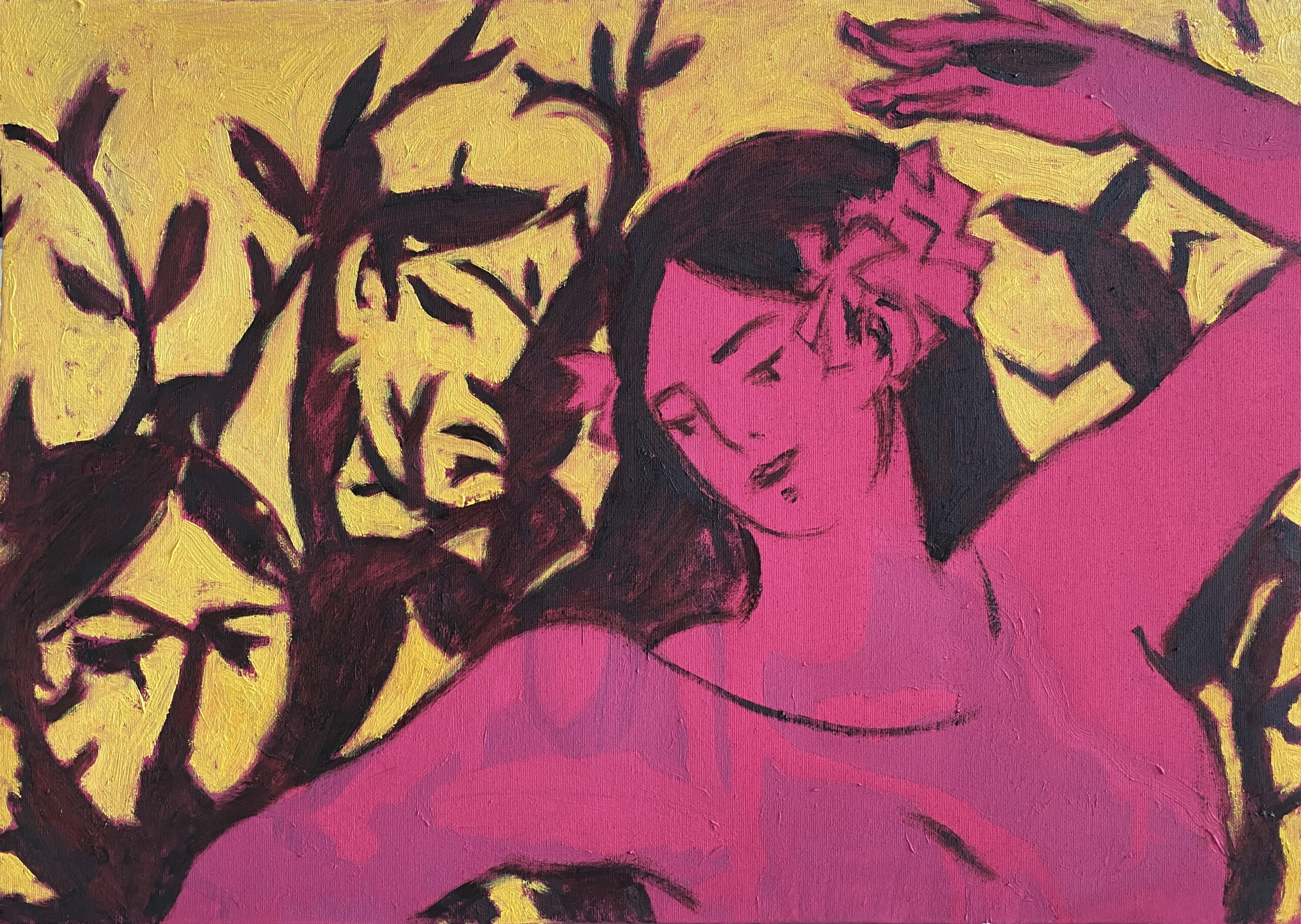The notion that “the artist is a neurotic who heals himself through art”, echoing Freud, aptly characterizes many aspects observable in Haldeev’s oil paintings. What’s more, the series, which I’m — for the purpose of this article — calling, the “Quince series” contains a profound understanding of the relationship between the symbolic, crucial human sphere and that material part of reality which is indifferent to human suffering, worries or dilemmas. Perseverative symbolism, embodied in quinces, vases, and a Fauvist colour palette, along with figures reminiscent of those from Henri Matisse’s Expressionist works, underscores the idea that trauma manifests itself in obtrusively recurring objects. In this case, it signifies the transformation of one situation into many compositional expressions. The repressed, once displaced, returns through a sublimation that makes its presence by a symbol placed in other contexts.
Artem Haldeev: The fruit of retrospection. Psychoanalysis of the Image

Before we delve deeper, Dear Reader, it is essential to know that Artem Haldeev, in his statement about his current paintings, indicated that they were created after the experience of observing a theft: “The quince will forever be associated with fear after the experienced attempted robbery, when I returned home completely emotionless and tried to eat the tasteless fruit that I once liked, attempting to feel ‘as usual.’ I never finished that quince” (statement of an artist).
From retrospection to introspection
There is always something you’re not supposed to see, but it is a condition of growing up that you will see it”,
writes Don Delillo, the American postmodern writer. This quote perfectly illustrates the painter’s attitude towards the subject of his works, and its visual representation in a psychological context. Haldeev provides many clues, from the reference to Orhan Pamuk’s novel to the ostentatious sightlessness of painted women. These figures are usually depicted covering their eyes (“Mangifera”) or looking away (“cydonia”). The titles, derived from the genus of fruits, establish a relationship with the figures in the paintings, detached from their primary meaning as tropical fruits, evoking Lacanian Gaze — the idea that material reality always exceeds and undercuts the symbolic order in our minds. The tasteless quince, in this case, becomes a symbol of acute passivity and observation of a disturbing situation. Disturbing enough to make the quince an omnipotent object placed in almost every image of the series. They might symbolize still life in a par excellence meaning. This occurrence reminds us of the regime of sight, memory, and all the forms in which our reality is anchored, in which aberration can forever alter the symbolic order of things. In other words, ‘Quince’ isn’t a quince anymore, it is a symbol of disturbed order resulting from an encounter with the Real, a symbol of an anxiety of castration.

The Symbol
Similar to Marcel Proust’s novel ‘In Search of Lost Time,’ where Madeleine becomes a contributor to retrospections, the fruit becomes a key element of the cycle of images. Haldeev has transposed its symbolism to encapsulate a sense of passive pain, trauma, and its repetitive nature. However, it also embodies themes of affirmation, regret, and hope, making the series simultaneously deadly serious and perversely grotesque. The artist has transformed the passivity of still life and painful inertia into a series that expresses the journey from encountering the Real to adapting the uncanny object. When we look at the last painting in the series (‘cover the long way’ – the only one lacking the aforementioned symbol), we see an affirmation of life – a gentle smile on the face of a dancing woman.





